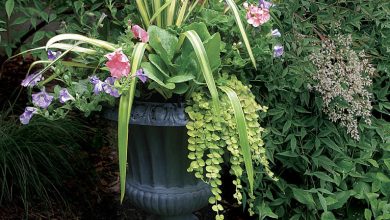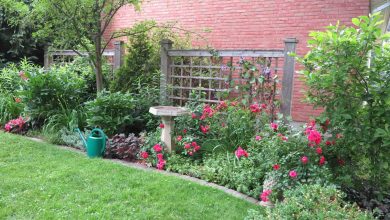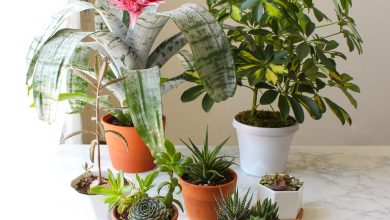7 fall bulbs to plant in October

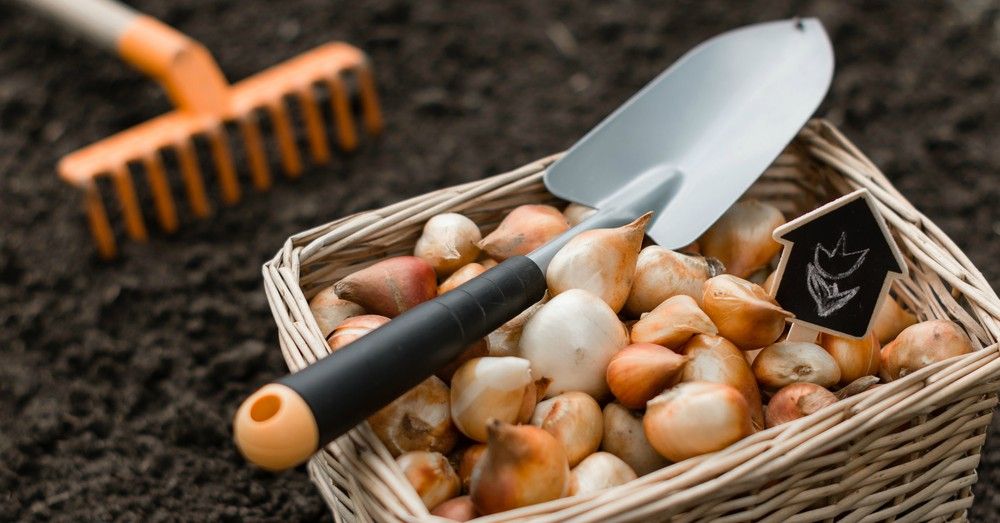
Autumn is already a fact. The days have started to get shorter and the temperatures are starting to remind us that we have said goodbye to summer. Something that, many times, we identify with having to give up the beauty of flowers until the arrival of spring. Nothing is further from reality! Fall bulbs are the best way to anticipate it. Some tremendous allies so that, even when the cold is still with us, we begin to feel that the heat is yet to come.
As the name suggests, fall bulbs are planted during this winter transition season. Or, what is the same, during October and November. Two ideal months not only to prepare the plants for the cold but also to start preparing for the next season of good weather. And it is that the main attraction of autumn bulbs is that their flowering will begin to emerge from the end of February. A moment of rebirth that will fill our terrace, balcony or garden with color and beauty. And, incidentally, it will encourage us to forget about the long and harsh winter.
But, in addition to knowing some tips for planting autumn bulbs, it is worth knowing that we are in luck. And we are in a time with an enormous number of possibilities when choosing what to plant.
OUR PROPOSAL FOR AUTUMN BULBS
For flower lovers, having to choose between them is never easy. And if, in addition, we talk about autumn bulbs, things get even more complicated! And it is that the variety that we will see blooming in spring is such that it is difficult to opt for one or the other. That’s why we want to suggest seven fall bulbs that will bloom in spring. Seven completely different flower styles that, however, can coexist perfectly if we wish.
We talk about living together because it is something perfectly possible. What’s more: it is advisable to plant autumn bulbs with different flowering times. In this way, we can gradually enjoy its beauty and, before we know it, spring will have returned with its display of life. That’s why our seven recommendations have a similar schedule when it comes to planting but not flowering.
1. Muscaris, the earliest of fall bulbs
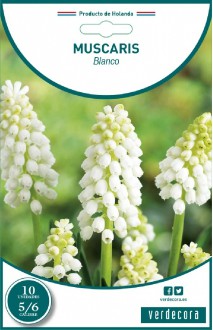
It is the first of the autumn bulbs to emerge from the substrate. Also called Nazarene, it is usually blue. However, this white variety is perfect for areas where winter does not have snow. The white of this spike-shaped flower will color naturally. The sooner we plant it, the sooner we can enjoy it. If we do it between September and November, we will have to calculate that it will bloom between February and April.
For it to flourish properly, ideally it should not be in a place where it does not receive sun all day. In addition, we will have to be rigorous with irrigation. Not so much at the time of planting, which will only require two irrigations per month. Above all we refer to the time of flowering. When the Muscaris is in flower, the ideal is that we water every three days, always taking advantage of the central hours of the day.
2. Crocus, another early spring flower
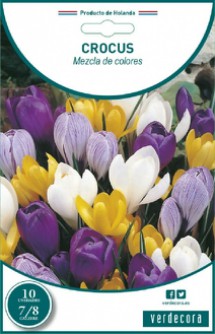
Small in size, the Crocus is perfect for any space. Whether in pots, planters, on the ground or in rockeries, it is impossible not to enjoy its discreet natural beauty. And we say discreet because, unlike other autumn bulbs, the Crocus is characterized by its small size. Something that is not at odds with the rabid color of its flowers, which can range from blue to purple through white or yellow.
Sowing between September and November, it will be one of the first flowers that we enjoy in the garden since they will bloom between January and March. Incredibly cold hardy, they should ideally be planted in an area that receives a good amount of sunlight.
3. Freesia, natural perfume
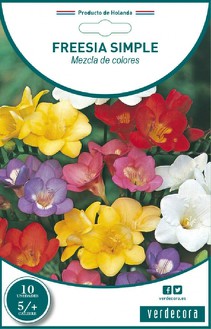
Beyond the incredible beauty of its flowers, it has another attraction. And it is that the aroma of Freesia is a delicious perfume with which to invisibly decorate our garden, terrace or balcony. Unlike other fall bulbs, it can be planted indoors. If we opt for this option, we must contemplate that it reaches a good height. A compelling reason not only for us to adapt the pot for this planting, but also for us to anticipate the space it may need.
Like the Muscaris, the ideal is that we plant in a space where it does not receive sun throughout the day. We will also have to be rigorous with irrigation at the time of planting, administering water twice a month; and in the flowering one, with an irrigation every three days depending on the weather.
4. Anemone de Caén, the delicacy made flower
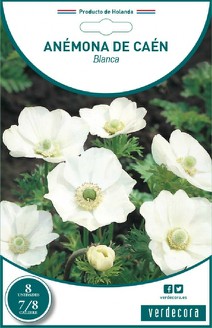
The Anemone is one of the autumn bulbs that we can enjoy in multiple colors. However, in our selection we have opted for this variety.Subtlety and elegance are two characteristics of this precious flower. A good reason for it to be one of the usual choices for flower arrangements. Its ideal planting time is October to be able to enjoy it between February and March. However, it is also possible to plant it in this month and see it bloom in June with the arrival of summer.
Before planting, it is advisable to soak Anemone bulbs in water for at least 12 hours. In this way, we will be helping these autumn bulbs to root correctly. Ideally, we plant it in a sunny place, sheltered from the wind and possible frost.
5. Iris, one of the quintessential fall bulbs
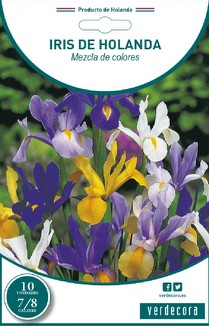
One of the autumn bulbs that arouses the most passions. And is not for less. In addition to its incredible natural beauty in shades of blue, white or yellow, another virtue is added: its versatility. And it is that we can plant Iris in pots, planters, in rockery areas or even around a pond. Any place is suitable for these beautiful flowers that are planted between September and December to bloom. Of course: they will not do it as soon as spring begins. Depending on the time of planting, they will do so between April and June.
If we delay their planting, it is advisable to protect them with a layer of organic fertilizer or dry leaves. Another fundamental aspect is the soil: regardless of whether we are talking about an organic substrate or poor soil, the vital thing is drainage. Iris demands permeable soil.
6. Narcissus, the symbol of spring
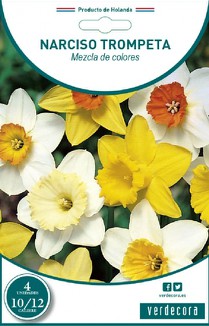
In many areas of our country, the flowering of the Narcissus in the wild is the symbol of the arrival of spring. However, when we plant them at home, their hatching time depends on our planting schedule. We can do it between August and December, to see its characteristic yellow or white flowers emerge between the months of February and April. A spectacle of natural beauty that is well worth waiting for.
In addition to well-drained soil, the Narcissus is picky about the terrain. It demands a substrate rich in nutrients and, preferably, with good solar orientation. In case of not having it, it can also develop normally in semi-shade.
7. Tulip, the king of gardens
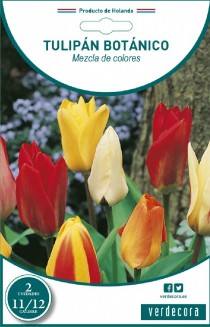
Perfect for color lovers but also for those who fall behind in the fall bulb planting schedule. One of the advantages of the Tulip is that it can be planted from now until the same month of January. And no, that does not mean that we have to wait too long to see its colorful reign in our garden or terrace. Its flowering time will be between March and April, even if snow fills our garden at that time.
Cold lovers and extremely resistant to it, they are demanding when it comes to the soil: they demand good drainage to prevent the bulbs from rotting.
And once our fall bulbs are planted, there’s just one more thing to do: be patient until they bloom. A wait that, without a doubt, will have been worth it.

![Photo of Irrigation of Bromeliads: [Needs, Frequency and Procedure]](https://www.complete-gardening.com/wp-content/uploads/2021/06/Bromelias_1620948611-390x220.jpg)
